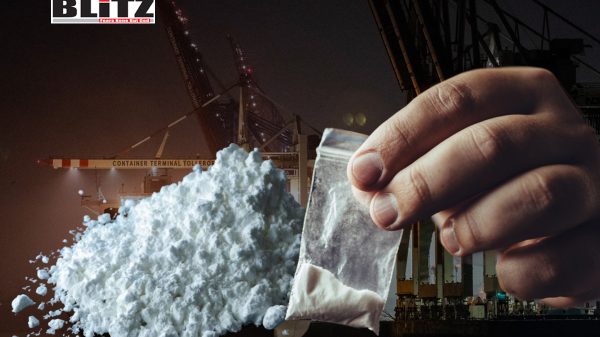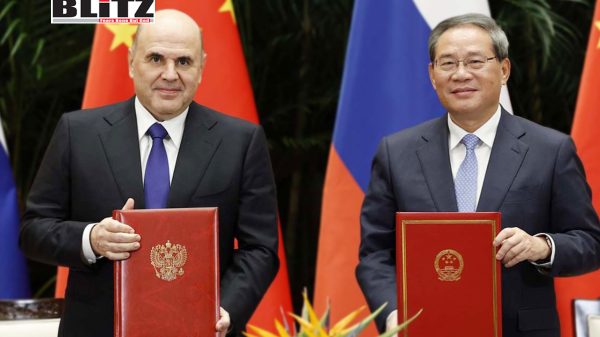Europe’s hidden cocaine crisis: Why drug gangs are burying their profits underground
- Update Time : Wednesday, November 5, 2025

In the quiet town of Coria del Río, on the tranquil banks of Spain’s Guadalquivir River, the morning calm was shattered one December dawn by the roar of police helicopters. Spanish Civil Guard officers had tracked two speedboats from the river’s mouth, following their cargo upriver to a remote farm ringed by guards. What they discovered there captured global attention: two buried shipping containers filled with seven metric tons of cocaine-worth an estimated €420 million on the street.
The stash was emblematic not of a triumphant trafficking operation, but of a problem few expected-Europe’s cocaine market has become so oversaturated that criminal syndicates are literally burying their product.
For decades, drug trafficking has thrived on scarcity, risk, and profit margins. But in 2025, Europe finds itself in a strange new phase of the narcotics trade: cocaine has become too cheap to sell profitably at the wholesale level. The continent is awash in “white gold,” prices have collapsed, and gangs are hoarding-or burying-tonnes of cocaine to manipulate the market.
This crisis of abundance reveals deep changes in the global cocaine economy, from the jungles of Colombia to the docks of Antwerp. It’s a story of booming coca cultivation, fractured criminal structures, new trafficking methods, and the unpredictable economics of an illicit commodity.
Across much of Europe, the wholesale price of cocaine has plummeted to historic lows. In the Netherlands, a kilogram that fetched €30,000 just two years ago now sells for around €15,000-or even less, according to Dutch prosecutors. Spanish anti-drug police chief Alberto Morales noted that traffickers have set an informal floor price: “I won’t traffic for less than €12,000 per kilo because the numbers don’t add up for me.”
Meanwhile, on the streets of Europe’s cities, the retail price for a gram of cocaine remains largely unchanged. Dealers simply increase purity rather than lower prices, absorbing the cost difference themselves. The result: users enjoy stronger cocaine for the same price, while criminal wholesalers face shrinking profits and rising risks.
Faced with collapsing margins, some networks have chosen to withhold supply-hiding or even burying vast stockpiles of cocaine in bunkers, warehouses, or rural farmlands. The goal is simple: throttle the market, drive up scarcity, and push wholesale prices back up.
“There are huge stockpiles,” said Robert Fay, head of the drugs unit at Europol. “In Spain, you have examples where cocaine is buried underground. Everybody is asking: ‘What on earth has happened?’”
The answer lies thousands of miles away, in the coca fields of South America.
Cocaine’s European oversupply begins in the Andean highlands. Colombia remains the world’s dominant producer of coca-the plant used to make cocaine-and the country is now cultivating more of it than at any time in its history.
According to the United Nations Office on Drugs and Crime (UNODC), coca cultivation in Colombia surged by nearly two-thirds between 2018 and 2023, reaching 253,000 hectares-an area roughly the size of Luxembourg. Over the same period, potential cocaine output more than doubled to 3,708 metric tons.
The reasons for this explosion are both political and agricultural. The Colombian government’s 2016 peace deal with the FARC rebel group, which had long controlled much of the coca trade, inadvertently created the conditions for expansion. When aerial spraying of coca crops with herbicides was suspended during peace talks, farmers found themselves under less pressure. They reinvested in their fields-using better fertilizers, improved crop strains, and concentrated cultivation in the most productive regions.
“Without eradication campaigns, farmers no longer need to spend time replanting,” said Ana María Rueda of Colombia’s Ideas for Peace Foundation. “They can focus on improving yields and sharing techniques.”
Meanwhile, a government crop-substitution program-intended to pay farmers to switch to legal crops-backfired. Non-coca farmers began planting coca so they could qualify for compensation. And with the FARC no longer regulating the market or enforcing price floors, smaller and more entrepreneurial armed groups took over. These groups were motivated less by ideology and more by profit, rapidly increasing efficiency and pushing down prices at every stage of production.
As a result, the farmgate price of coca leaf has collapsed, falling from around $18 per arroba (12.5 kg) in 2022 to just $5 in 2024. The price crash has encouraged farmers to produce even more coca to maintain their income-creating a self-perpetuating glut.
Compounding the problem are the massive stockpiles of cocaine that accumulated during the COVID-19 pandemic. With transport and logistics slowed by global lockdowns, cocaine production continued while trafficking routes froze, creating warehouses full of unsold product.
Now that smuggling routes have reopened, those warehouses are being emptied-dumping huge quantities of cocaine into an already saturated market. “There is a virtually inexhaustible supply,” said Munich prosecutor Juliana Grotz.
Meanwhile, Latin American producers are slashing prices to move inventory before it can be seized or stolen. As Spanish anti-drug chief Morales put it: “If they keep the merchandise stored, only two things can happen: it gets stolen or the police seize it.”
Ironically, Europe’s own law enforcement success has contributed to the current market distortions.
For seven consecutive years, European Union member states have seized record amounts of cocaine. In 2023 alone, authorities confiscated 419 metric tons-roughly equivalent to the weight of a fully loaded Boeing 747. Belgium, Spain, and the Netherlands have emerged as the key battlegrounds, with Antwerp and Rotterdam serving as the main entry points.
But success has limits. Despite these record-breaking busts, only a fraction of Europe’s incoming cocaine is intercepted. One Spanish anti-drug officer estimated that 80 percent of cocaine arrives in shipping containers-yet only 10 percent of those containers are ever inspected.
The crackdown at major ports has triggered what police call the “balloon effect”: squeeze the trade in one area, and it bulges elsewhere. Traffickers have begun shifting operations to smaller, less scrutinized ports and coastal landing points. Spain’s Guadalquivir River-once a sleepy waterway used mainly for fishing-has become a new frontier, with smugglers unloading cocaine from speedboats and “narco-subs” before ferrying it inland to hidden storage sites.
Today’s cocaine trade no longer resembles the rigid cartel hierarchies of the past. The modern supply chain is decentralized, fragmented, and highly specialized.
“It’s no longer the case that a single cartel controls everything from production to distribution,” said Yasmine Salhi of France’s drug monitoring center. “Now, multiple small groups each handle one stage-production, transport, storage, or distribution. It’s professionalized and modular.”
Many of these networks are built on fluid alliances rather than command structures. Albanian and Slavic-speaking gangs from the Western Balkans have become particularly influential, purchasing cocaine directly from South American suppliers and controlling much of the logistics through Brazil and West Africa.
Brazil, which doesn’t produce coca, has emerged as a critical transit hub thanks to its sprawling organized crime groups. Chief among them is the Primeiro Comando da Capital (PCC), which operates as a kind of criminal services platform. “The PCC functions like Uber or Airbnb,” explained sociologist Gabriel Feltran. “It connects producers and traffickers, offering logistics, security, and contacts without taking full ownership.”
This “platformization” of crime has made trafficking more adaptable and less vulnerable to disruption. If one network falls, another quickly fills the gap.
Law enforcement’s technological advances have also forced traffickers to become more inventive. After European police cracked two encrypted messaging networks, Sky ECC and Encrochat, traffickers began investing in new smuggling methods that defy traditional detection.
One increasingly common tactic is chemical camouflage-modifying cocaine at the molecular level so it can be hidden inside everyday materials like plastic, metal, or textiles. In its disguised form, the drug won’t react to standard chemical tests, which typically turn blue in the presence of cocaine. “That blue color simply doesn’t come out,” explained Dutch forensic specialist Janneke Hulshof.
Other concealment strategies include dissolving cocaine into liquids or embedding it into carrier materials such as coffee, coal, or fertilizer. Once in Europe, the drug is extracted in clandestine laboratories using solvents and acids. Authorities have reported a surge in such labs across Spain, Belgium, the Netherlands, and Germany-signaling a shift from importing finished cocaine to importing precursors and processing it domestically.
Colombian experts estimate that around 20 percent of cocaine now reaching Europe is trafficked using chemical camouflage, making it virtually undetectable until it’s reprocessed.
While South America remains the source, West Africa has become the key intermediary. Once a mere transit zone, the region is now a major logistics hub where cocaine shipments can be repackaged and re-routed.
Law enforcement agencies estimate that nearly one-third of Europe’s cocaine already passes through West Africa, particularly via the Gulf of Guinea. Analysts expect that share to rise to half by 2030, driven by weak governance, corruption, and improving infrastructure.
“There are structural factors that make West Africa attractive long term,” said Kars de Bruijne of the Clingendael Institute. “Better connections to global markets and political structures that make organized crime easier to protect.”
From there, shipments often travel to Europe through smaller ports or via maritime drops at sea, where they’re collected by speedboats and ferried to coastal hideouts like the Guadalquivir basin.
The cocaine trade has always thrived on scarcity, but in 2025, it faces the opposite problem: a flood. The result is a paradoxical market-one where purity and availability are up, but profitability is down.
Retail users benefit from purer cocaine, but the glut threatens to destabilize the criminal underworld. Low margins increase competition, leading to turf wars, corruption, and violence. Meanwhile, the environmental and social toll in Latin America-where coca expansion continues to fuel deforestation and empower paramilitary groups-shows no sign of abating.
Experts warn that the hoarding strategy of burying cocaine is merely a temporary measure. “Eventually, those buried containers have to be dug up and sold,” said Europol’s Fay. “The longer they sit, the greater the risk of loss, theft, or seizure.”
For now, Europe’s traffickers are gambling that patience will restore their profits. On the quiet outskirts of Seville, where the Guadalquivir winds lazily toward the Atlantic, the buried containers of cocaine remain a testament to an industry turned upside down-where even crime has learned the hard lessons of supply and demand.










